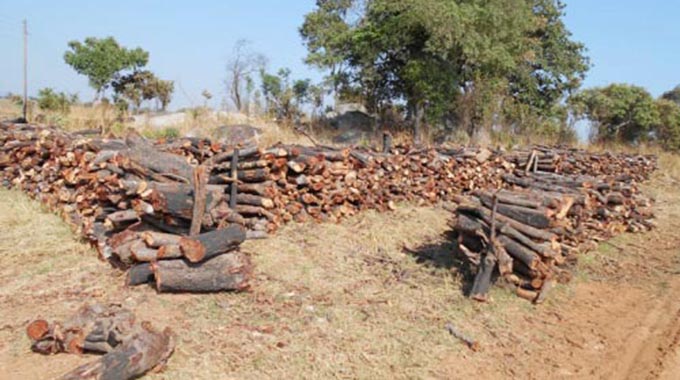
Chipo Chaumba and Panashe Chikonyora
The Forestry Commission says it is targeting to plant 40 million tree seedlings countrywide this year as part of a long term strategy to proffer tobacco farmers with energy solutions by making the tobacco curing process efficient, environmental friendly and sustainable.
Although tobacco is the second largest foreign currency earner in the country after gold, concern has been raised on the manner most farmers, mainly smallholders, have been decimating forests in their quest to cure the crop.
Coal has been the traditional energy source, but has proved to be non-viable for many new farmers due to the cost of bringing it from Hwange by road to most tobacco producing areas.
The tobacco marketing season is expected to open next month and during this period there is an accelerated cutting of trees in most tobacco growing areas for curing processes.
However, in September last year the Tobacco Wood Energy Programme (TWEP) received $13 million from the afforestation money deducted from tobacco sales since 2015, after Government decided to re-introduce the tobacco levy to be used in the re-forestation of areas affected by tree cutting.
Tobacco is widely grown in the country’s Manicaland, Mashonaland East, Central and West provinces, while in recent years, other provinces such as Matabeleland and the Midlands have also tried the crop.
Addressing journalists after unveiling the initial set of material procured under the afforestation fund, Forestry Commission general manager Abednigo Marufu, said the fund is crucial to the tobacco industry as the shortage of trees can affect the successful growing of the crop.
“About 300 000 hectares are being lost every year to deforestation and 15 to 20 percent of that is associated to tobacco curing . . . so our target for this year is to produce 40 million tree seedlings, different varieties of trees, not only eucalyptus but different varieties which our farmers want.
“This is mainly targeting tobacco curing, so they could be indigenous trees here and there and also eucalyptus. We are also going to produce fruit trees so that every farmer benefits,” he said.
Forestry Commission said it has so far established demonstration of tobacco curing firewood plantations, procured polythene containers for seedlings, drilled boreholes, procured fencing materials for nursery establishment and vehicles for field operations in tobacco growing provinces.
Meanwhile, Environment, Climate, Tourism and Hospitality Industry Ministry said it anticipates the country to experience amplified forest cover in the next 5 -10 years as a result of re-forestation efforts by tobacco farmers and forestry commission.
Representing Environmental, Climate, Tourism and Hospitality Industry Minister Mangaliso Ndlovu, Acting Permanent Secretary Patience Zenda said as part of interventions to improve forests, the Government had established nine of the 65 nursery sites in the tobacco growing provinces.
“I am confident that the Forestry Commission is going to live up to expectation by demonstrating that with such resources at its disposal, the nation is going to be under increased forest cover as a result of the re-forestation effort.
“. . . the objective of Government by re-instituting the tobacco levy for re-forestation purpose is to stabilise, or at best reverse the currently escalating deforestation rate,’’ she said.
Last year Government disbursed $185 million to the Forestry Commission to finance re-forestation initiatives nationwide.
